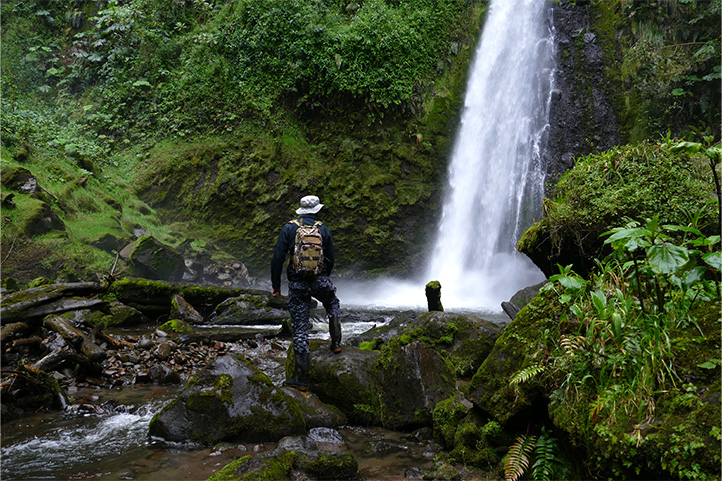Updated on 04/16/2024
Dear reader,
I would also like to recommend our Colombia travel guide, which provides a perfect overview of the tourist attractions in Colombia. Enjoy reading it!
Content
What Makes Colombia’s 33 Natural Sites Unique ?
Basically,Colombia has 33 departments and 91 ecosystems from coral reefs, jungles to arid deserts and many more. Oh, and one highlight:
- Colombia is a world leader in bird watching and is home to a wide variety of butterflies and other wildlife.
Just imagine what you can find in each department! Here is your top 1 eco-tourism spot.
This is why Colombia is considered as a mega-diverse country, there is a natural wonder or natural spectacle in every corner that a traveler should experience.
In the following text, we go on a natural journey through Colombia and discover the most beautiful places that Colombia travelers have to witness.
We will travel virtually to the most famous natural attractions as well as many unknown destinations.
Amazon, Leticia
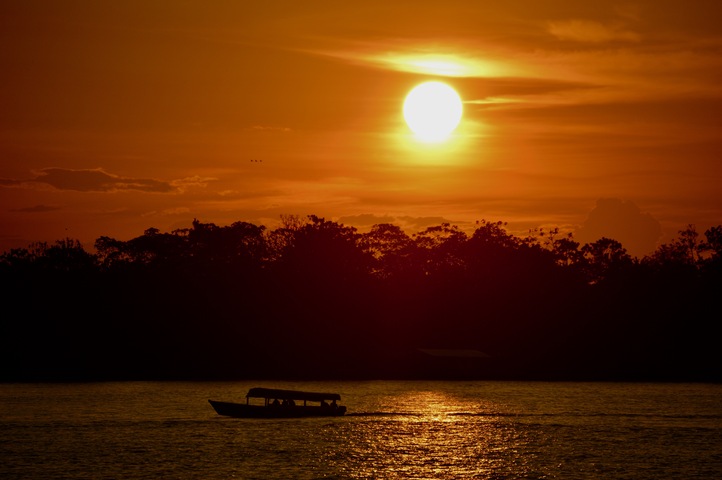
- Did you know? The Amazon region covers nearly a third of Colombia.
- Where to start? To experience the Amazon up close, Leticia is your starting point. It’s the most popular spot for beginning the journey through the entire Amazon department.
- What to expect? You will explore wildlife, meet indigenous communities, walk on eco-trails, and even partake in all sorts of river activities such as boat rides while watching wild flora and fauna, and even pink dolphin sighting.
- What about tourism wise? Tourism is not yet very developed in this department, but it is still the most advanced tourist destination among the departments in the Amazon region. But I won’t throw you off any more spoilers.
Puerto Nariño
- Amazonian getaway: The small village of Puerto Nariño is a 2-3-hour boat ride and 54 miles (87 km) from Leticia. You are in the middle of the Amazon, you can stay there and there is even a decent hotel.
- Exploration opportunities: From Puerto Nariño, you can embark on various excursions in the area, on foot or by boat. It also depends on the season, as the difference in water level is enormous.
Reserva Natural Palmari
- Leticia? Yes and no! Leticia is not only an incredible city, but it also has one foot in Colombia and the other in Brazil. So, crossing the border is a piece of cake, you can literally do it on foot!
- Boat adventure: To get to Palmari, prepare yourself for a boat journey. If the tide is low, it will take 5 hours; but if it’s high, only 4.
- What awaits you: Once there, what you will experience is pure Amazonian adventure. From bird watching to authentic amazon jungle expeditions that last several days, Palmari has it all.
Antioquia, Medellín
- Capital of eternal spring: Everyone interested in Colombia probably knows the city of Medellín. However, the Antioquia department has much more to offer than its capital.
Also, I wrote the most complete Medellin travel guide you should check to complement your adventure.
Jardín
- Cultural gem near Medellin: Jardín is a small town about 3 hours drive from Medellín. It is also a well-known cultural asset in the country and the colonial architecture is very well preserved.
- Nature’s Heaven: There is pure nature around Jardín. There are several routes for hiking, rivers, and waterfalls.
Guatape
Known as the most colorful village in Colombia, Guatapé is Medellín’s number 1 destination. Climbing the big rock “El Peñol” is of course mandatory during a visit.
- Climb El Peñol: First things first, you must scale the massive rock (2.137m) of El Peñol; it’s a must. The views are out of this world.
- But there’s more: Imagine a man-made blue lake, surrounded by small islands. You can explore on foot or in the water, and even try water sports.
- Can you stay overnight? There are accommodation options to suit all tastes, spread across all the islands.
- My advice? Stay for two or three days instead of just making a quick visit. Trust me, you won’t regret it.
San Rafael
San Rafael was founded in 1864. The pretty little village is also a popular destination for city dwellers:
- A popular destination: San Rafael isn’t just for those seeking tranquility but also for those wanting a dose of adventure close to nature.
- Rivers and natural pools: Perfect for cooling off on sunny days with temperatures up to 31°C.
- Caves and trails: If you love exploration and hiking, there are endless paths leading to mysterious caves waiting to be discovered.
Arauca, Arauca
Granted, I haven’t been to Arauca yet. But I have already been invited several times.
- Pure Llanero life! Arauca is all about the Plains, so get ready to see lots of cattle raising. Yes, those sunsets with cow silhouettes are picture-perfect.
- Chocolate: Besides cattle, Arauca produces exceptional cocoa. One of the top worldwide cocoa thanks to its fine aroma and texture.
- For fishing enthusiasts: With several rivers crossing the department, sport fishing is a must.
- Mountains to steppes: Arauca stretches all the way to the Cocuy National Park, a park with high mountains to vast steppes. There’s no shortage of activities, in a territory where you hardly run into anyone.
Atlántico, Barranquilla
- Beyond carnival: At Barranquilla, of course, everyone thinks of the carnival right away, but unfortunately, it only takes place once a year.
- Nature and birdwatching: Outside the department’s capital, there are some efforts to develop the area for nature tourism and bird watching.
Also you may check our most complete Barranquilla travel guide.
Luriza
Luriza is a nature reserve that offers a nature experience on the hot Caribbean coast. The organization is still very young but will hopefully develop over the next few years.
Access: There is a fee for access.
Activities:
- Hiking.
- Flora and fauna sighting.
- Birdwtching.
- Camping.
- Cool off in the rivers.
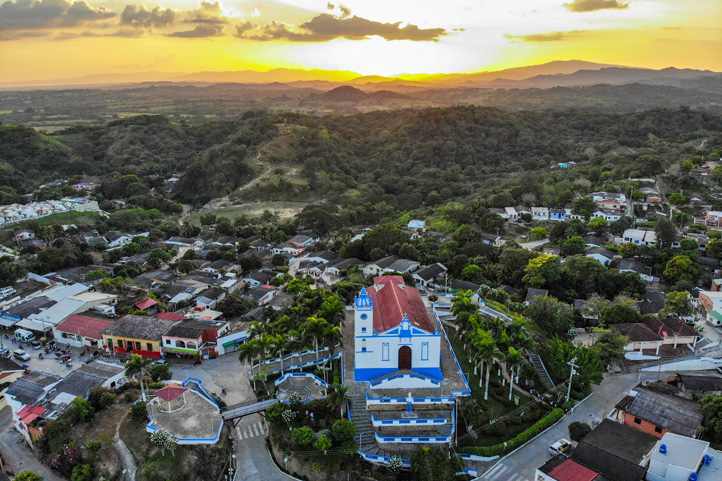
Piojó
Right next to the small village of Piojó, there is also a privately operated nature reserve where you can not only enjoy an excellent breakfast but also discover the local nature through good trails.
Access: There is a fee for access.
Activities and services:
- Hiking.
- Camping.
- Birdwatching.
- Lodging.
- Flora and fauna sighting.
- Outdoor pool.
- Restaurant.
- Landscaping.
- Natural wells.
Bogotá, Bogotá D.C.
Bogotá is the capital of Colombia and forms its own department. Although one might assume that a city of 10 million people cannot escape it, the city has some interesting green spots.
The whole eastern flank of the mountain range is also part of Bogotá and offers some interesting excursion spots for nature lovers.
You can certainly count La Calera, Monserrate, La Chorrera, and a few other hikes. Furthermore, Bogota has some very large city parks and the Botanical Garden is an absolute showpiece and offers a unique experience.
Bolívar, Cartagena de Indias
I’ve got the perfect place for you. Cartagena de Indias is known as the best tourist destination in Colombia.
- Top cultural city: It is a city that captivates with its mix of history, beaches, and vibrant culture. The Walled City is the heart of Cartagena. You can walk through its cobblestone streets and feel transported to the 19th-century colonial era.
- Beaches: You must go to the Rosario Islands. It’s what you imagine when you hear “picture a paradise beach.” It is a true paradise in the Caribbean with crystal-clear waters and white sand perfect for diving and snorkeling.
- Ciénaga de la Virgen: A place surrounded by mangrove forests, ideal for bird and wildlife watching. But the best thing is that locals also teach you how to fish from a raft, with their traditional techniques.
Also, don’t forget to visit the Los Colorados Flora and Fauna Sanctuary:
- It is a protected area located in Bolivar that preserves the most important tropical dry forest in the Colombian Caribbean.
- Here you find a great diversity of plant and animal species, including more than 280 bird species.
- It’s the ideal spot for hiking, landscape photography, and bird watching.
Boyacá, Tunja
Boyacá has a great wealth of natural resources.
- Nature at its finest: Explore from the páramos near Villa de Leyva and Monguí like the Iguaque and Oceta’s páramo to the imposing Cocuy National Park that also extends to Boyacá, a paradise for nature lovers.
- Adventures on wheels: For mountain biking enthusiasts, the area around the small town of Susacón offers spectacular routes among landscapes worthy of a postcard.
- Hikes and more: The Chicamocha canyon and Tota lake are dream destinations if you enjoy long walks, horse-riding and boat rides, offering challenging routes and impressive views.
- The Chicamocha Canyon actually starts its journey in Boyacá, but it reaches its greatest depth in Santander. It is also a spot for you to photographspectacular landscapes and flora and fauna sighting.
Of course! you can find detailed information on the Boyacá and Tunja travel guide.
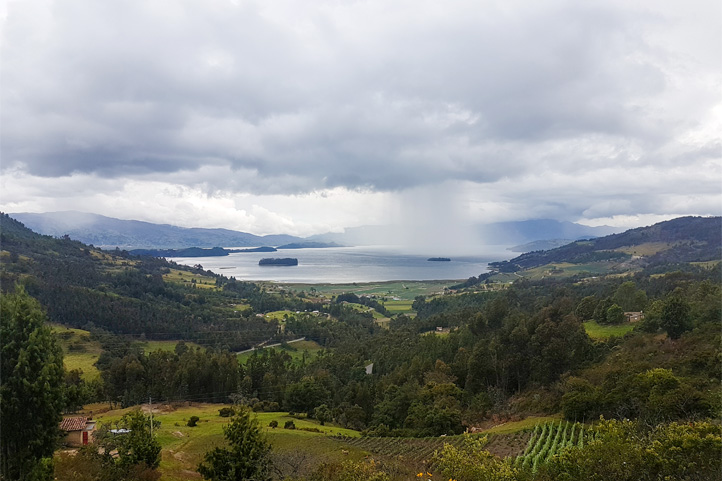
Caldas, Manizales
Caldas is another natural paradise!
- Nevado del Ruiz: Right next to the capital. If there’s no seismic activity, get ready for some incredible hikes!
- Bike to Manizales: From the Nevado, head out on a bike to Manizales or embark on longer tours.
- Spectacular hotels in Villa María: Imagine relaxing in hot springs with views of the countryside. Sometimes, you might even see the majestic Andean condor, the largest flying bird on the planet.
- Salamina: It’s not only one of Colombia’s most beautiful historic towns, but nearby, you have a wax palm forest, less busy than the Cocora Valley. Perfect for walks or horseback riding.
You may also check my Manizales travel guide and read another bunch of top places you can visit.
Caquetá, Florencia
- Florencia and armed groups: I recently visited Florencia. It is also one of those departments that have long been occupied by armed groups. Even for many Colombians, it is still unthinkable to even think about vacationing in this area.
- Turism in development: During our visit, however, we noticed that there is untouched nature in this region as far as the eye can see. Tourist offers are emerging, but development will still take some time.
For an insight into this region, I recommend you to watch the video and read my Florencia travel guide.
Casanare, Yopal
I can call Casanare my second home in Colombia with a clear conscience. I’ve been there a dozen times by now and I’ll keep going back there.
- Los Llanos: Casanare is part of this region of vast plains stretching all the way to Venezuela, dominated by cattle ranching. The climate is hot, and you hardly come across people. It is the perfect spot to disconnect.
- Sustainable tourism: Find farms and ranches dedicated to sustainable tourism. They are reforesting forests and giving space to the wild animals of the region.
- Unique experiences: From game viewing safaris to sunset rides and even luxury glamping, this department’s offer is amazing.
Casanare is ultimately elevating tourism, in my Casanare and Llanos travel guide I’ll tell you more about it.
Cauca, Popayan
- Beauty and Challenges: Popayán is definitely one of the most beautiful cities in Colombia and has the perfect climate. Even though, it still faces security challenges in some areas.
- Puracé National Park: One hour from Popayán, this park is guarded by indigenous communities that offer local guides, highlighting the coexistence with nature and ancestral culture. The park is a natural paradise and with a little luck, you can sight the Andean condor.
Cesar, Valledupar
A destination unknown for foreigners close to the Caribbean coast, at the foot of the Sierra Nevada de Santa Marta. The Cesar department features:
- Postcard mountains: The scenery is reminiscent of the pre-Alps, with rivers of crystal-clear waters. It is preserved by the local indigenous communities who take care of this paradise.
- Adventure and relaxation: from hiking or horseback riding to swimming in the rivers, it truly is a perfect destination for extreme sports or simply enjoying some peace and quiet.
After watching a video about this spot and a glance at the Valledupar travel guide, you’ll surely be tempted to visit.
Chocó, Quibdó
Chocó is located on the Pacific coast.
- Natural paradise: Chocó has high biodiversity and is one of the wettest places in the world.
- Few inhabitants and lots of nature, it could be described as a wild corner with many unexplored ecological trails.
Safe destinations? But it’s not all plenty cool, here is the deal:
- Unfortunately, this area faces serious problems. It is considered one of the most corrupt areas in Colombia.
- In addition, illegal mining has caused significant pollution, and there are armed groups involved in drug production and trafficking.
For these reasons, there are only two places on the Pacific coast that are considered super safe: Bahía Solano and Nuquí.
- And last but not least: Visiting the Pacific coast is worth it for its wild and unpredictable beauty. So, you should plan your trip well and stay for several days, as it can sometimes rain for an entire day.
But do not worry, in the Chocó travel guide I give you tons of options to explore this region.
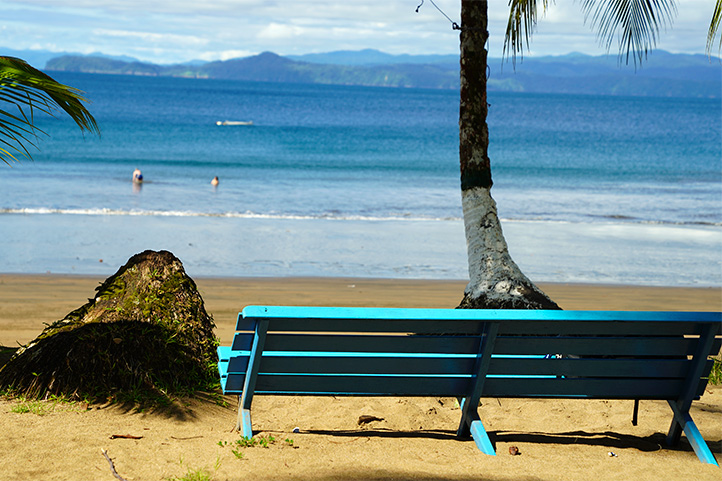
Cordoba, Montería
- Top Landscapes: Córdoba is a coastal department, but also has some inland waters and mountains because it borders the Antioquia department.
- Hiden beach gems: In any case, you should keep the beaches in mind such as the Cispatá bay with its white sand, just 80 km from Montería, because they are not visited by crowds of tourists.
- Nature lovers should definitely visit the Parque Nacional Natural Paramillo, where you can find tropical rainforest ecosystems.
Cundinamarca, Bogotá
Although Bogota D.C. forms its own department, it is still the capital of Cundimarca department. This region has it all-too- and offers countless activities for nature fans.
- Natural parks: You can find natural parks such as Chingaza, Quinini, Sumapaz, Pionono, Piedras del Tunjo, and Chicaque, some of the greatest natural parks in Colombia.
- Eco-activities: Then there are various activities in the adjacent eastern Cordillera and the area around Villeta such as hiking, visiting waterfalls over 10 meters high or canopying.
- Proximity: And best of all, most destinations can be reached relatively quickly from the capital.
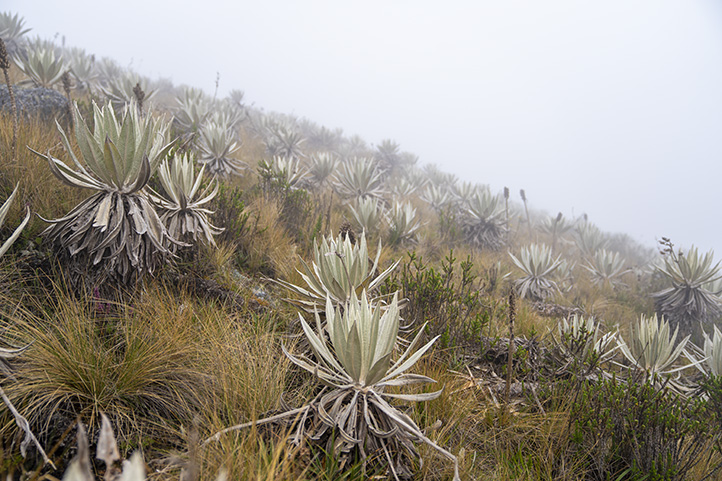
Guainía, Inírida
Guainia is the right destination for those who love adventure and not just nature. This department in the Amazon region borders on Venezuela.
- Mavicure hills: The absolute highlight is probably the hills of Mavicure, monoliths up to 712 meters high, which you can climb and walk. There are hardly any better and more exclusive photo subjects.
- Nature and adventures: There is also pure nature with other impressive landscapes, and activities such as rboat excursions, flora, fauna and lagoon sighting.
Guaviare, San José del Guaviare
Guaviare is also an undiscovered region of Colombia.
- Caño Sabana: It’s a natural rainbow in a river with pink algae and crystal-clear waters that change color at certain times of the year.
- Puerta de Orión: A unique rock formation where you’ll see the sun filtering through, creating spectacular views.
- Cerro Azul: It’s an open-air museum where you’ll observe ancient rock paintings. Here, you’ll have a direct connection with past indigenous cultures.
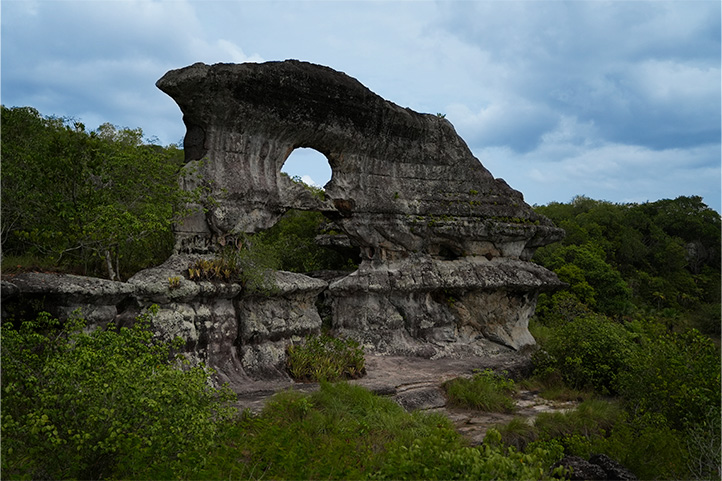
Huila, Neiva
- Huila in Colombia is a region rich in biodiversity, with various ecosystems such as savannas, high –mountain, grasslands, tropical forests and desert areas.
Oh, and something I almost forgot to mention is that the Colombian Massif is located in Huila. This means you find the most important natural water production point in the country here. Pretty cool, right?
But here there are some must-try activities:
- Tatacoa Desert: This “desert” is famous for its reddish and gray formations and starry skies. It’s one of the best spots for stargazing in Colombia. A unique experience for astronomy lovers.
- San Agustín Archeological Park: This is a monumental site. Here, you find more than 600 stone statues, monolithic sarcophagi, and petroglyphs. It represents the Agustinian culture and is a UNESCO World Heritage Site.
- Magdalena river: This place is surrounded by the beauty of the Magdalena River, whose basin is almost as grand as that of the Rhine and stands as the most important in Colombia.
- Palestina: My friend Michael and his family await you at their coffee farm turned hotel in Palestina –El Encanto. Besides tasting spectacular coffee, there are interesting places to discover in the surroundings, such as a cave with the unique oilbirds.
You can find out more in the Neiva travel guide we have made for you.
La Guajira, Riohacha
Does La Guajira ring a bell? If it’s not yet on your radar, here’s why it should be:
- More than a desert: Alta Guajira is famous for its desert, but this department is larger than you imagine. Even parts of the Sierra Nevada de Santa Marta are in La Guajira.
Varied adventures:
- Kitesurfing and sailing in small sailboats: The northern winds of La Guajira attract both amateurs and professionals to engage in these activities on the beaches of Mayapo.
- Canyoning: The rivers and streams of La Provincia and southeastern La Guajira are perfect for canyoning. Basically, you will descend through canyons and waterfalls using climbing and rappelling techniques.
- Hiking: Places like the La Macuira National Natural Park and Cabo de la Vela offer natural trails for you to explore.
- Sandboarding: At the northernmost point of South America lies the La Guajira peninsula. From the Serranía de Macuira, you can cross the Alta Guajira desert in a 4×4 vehicle and reach the Taroa Dunes, where you can slide on a sandboard down the dunes next to the Caribbean Sea.
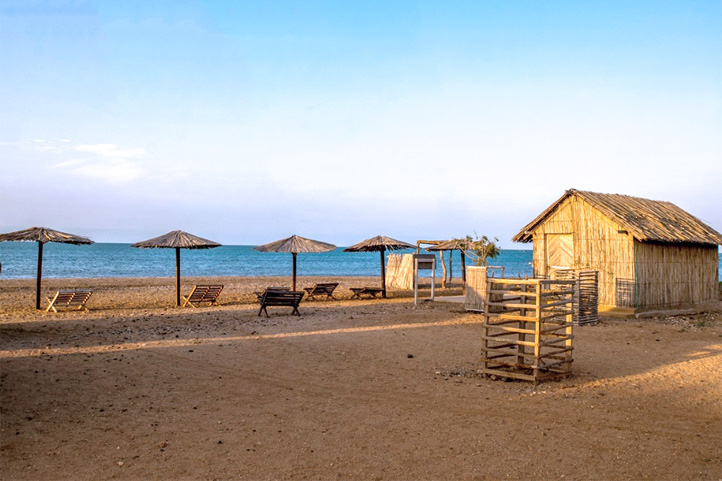
Although tourism is still blossoming, in my perspective, the potential is huge because La Guajira is simply spectacular.
Please add La Guajira to your must-visit destinations list!
Magdalena, Santa Marta
Magdalena, with its heart in Santa Marta, is a hit among travelers. The region is surrounded by sea, rivers and swamps. If you haven’t visited yet, now’s the time!
Sierra Nevada de Santa Marta:
This mountain range is an essential part of Magdalena and a Colombian treasure. The Sierra Nevada de Santa Marta is the world’s first highest coastal mountain chain with highest peaks (5,775 and 5,560) m.a.s.l And it’s one of the country’s most popular tourist spots.
Here is the thing:
- Unique biodiversity: In Sierra Nevada you find mammals like monkeys and jaguars to a variety of bird species and more than 1,800 plant species. This makes it a perfect tourist destination for spotting flora and fauna.
- Indigenous culture: You can visit indigenous communities that live in the Sierra Nevada and maintain their ancestral traditions. Also, you must go to The Lost City (Teyuna), a sacred archaeological park located in the midst of its mountainous forests.
- Diverse ecosystems: From beaches to permanent snow, in the Sierra Nevada you will find a variety of ecosystems, such as tropical forests, high-mountain grasslands, and dense jungles. It is a place where biodiversity and indigenous culture intertwine.

The best starting point to tour Magdalena is from Santa Marta.
Meta, Villavicencio
The Meta department spans from the Chingaza National Park, over 4,000 meters above sea level, to the large Orinoco plains at about 300 meters ASL. A vertical journey!
- Natural pearls: Chingaza is not the only treasure. The foothills of the Cordilleras near Villavicencio, including the Bavaria Forest, are highly recommended for hiking enthusiasts and bird watchers.
- The plains: If you delve into the Plains, you’ll find extensive savannahs and regional fauna. For instance, bird watching and ecotourism are really taking off here.
- Safari llanero: The best safari plans are in this region; you can get plans of up to 6 days where you can observe all kinds of wild animals including capybaras, birds, giant anteaters and crocodiles.
Nariño, Pasto
Bordering with Ecuador, Nariño is an absolute nature department. Not only are there countless volcanoes, but also canyons, rivers, mountains, and even the Pacific coast.
- Galeras Volcano: An active volcano surrounded by pure nature! If you’re into trekking, mountain climbing or love bird watching, this place is a must-visit paradise. Check beforehand if it’s open during your visit.
- Azufral Volcano: Get ready for hiking among unique landscapes with this majestic volcano. Its crater hides a lagoon with crystal-clear waters where you can take awesome pictures.
- La Cocha Lagoon: It’s the largest lagoon in Colombia, here you find mountains, forests, boat rides, and aquatic bird watching.
- Tajumbina Hot Springs: Located in Ipiales, these hot springs are the perfect spot for you to completely relax amidst untouched jungles.
On my last trip, we visited different bird watching destinations. The accommodation is not luxurious, but nature deserves 5 stars. Also you may check our Pasto travel guide.
Norte de Santander, San José de Cúcuta
Norte de Santander has always been in the headlines and the department is considered a risk destination because there are armed groups.
Nevertheless, at a recent tourism fair in Bogota, I had long conversations with local tour operators, who explained to me that the uncertainty only affects the north of the department.
The nature experiences offered are impressive, some examples are El Tamá National Park and the Santurbán páramo, that hold huge ecological importance. But I want to get an impression on-site before I make recommendations here. So, I have a visit to the region still pending.
Putumayo, Mocoa
Once a zone of armed groups, today Putumayo is safe and welcomes tourists with open arms.
- End of the World: El Fin del Mundo waterfall, 70 meters high, is a touristic and natural icon of the place.
- Pure nature and adventure: Waterfalls galore and untouched nature invite you to adventure. From hiking to canyoning and horseback riding, there’s everything if you truly love adrenaline.
Accessibility: Although it’s part of the Amazon region, remember that not all corners are accessible by road.
Quindío, Armenia
Quindío is probably the most touristy region in the coffee triangle. The areas around the Valle de Cocora and Salento act like magnets. In fact, UNESCO declared these landscapes a World Heritage site. However, there are many other great destinations and nature experiences in the area.
- Explore beyond Cocora: If you head towards Tolima from Salento, you’ll find a paradise of wax palms around 80 meters high and untouched nature. And best of all, few tourists in sight!
Buenavista: In addition to authentic towns, this area offers you coffee plantations with spectacular views. In this occasion we also made the Coffe Triangle and Armenia travel guide for you.
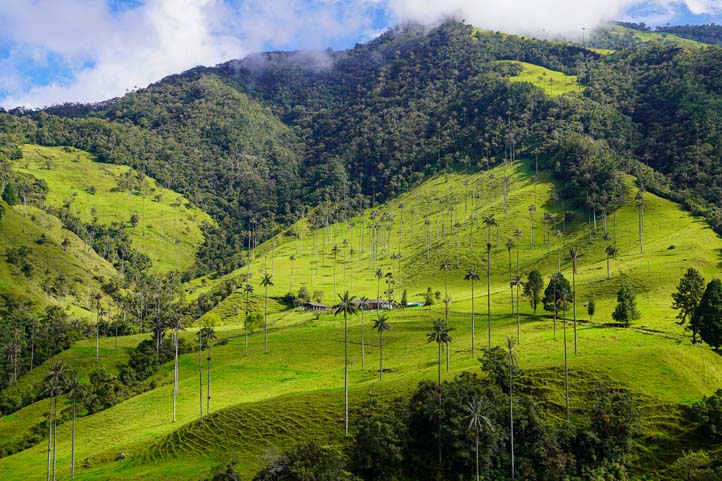
Risaralda, Pereira
Risaralda also offers fantastic nature experiences. Especially towards Chocó, where the more influenced by the Pacific.
- Bird Paradise: This area is a must-visit! You’ll find an impressive diversity of birds, making it a key destination for birdwatching enthusiasts.
- Apia, movie-like panoramas: Around Apia, you should ready your camera to take panoramic shots of the valley, with birds flying across the sky.
- Risaralda Birds Festival: Every March, the region becomes the meeting point for photographers and bird enthusiasts from all over the world. With more than 800 species to spot, it’s the perfect event to capture the beauty of the avifauna.
The starting point to visit Risaralda is in Pereira, check our travel guide.
San Andrés y Providencia, San Andrés
Providencia is a paradise in the Caribbean near San Andrés!
- San Andrés vs. Providencia: While San Andrés boast almost untoached landscapes to the south, it opts for mass tourism. Instead, Providencia chooses to protect its natural environment, the difference is stark. Just a 15-minute flight away.
- Protective policy: Thanks to its focus on conservation, Providencia remains an unspoiled paradise. Here, you’ll enjoy tranquility and natural beauty.
- Adventures and delights in Providencia: Here you find secret beaches, boat tours, hiking, diving, more beach sports, and, best of all, very fresh seafood.
Find many more activities in San Andres and Providencia on our guides.
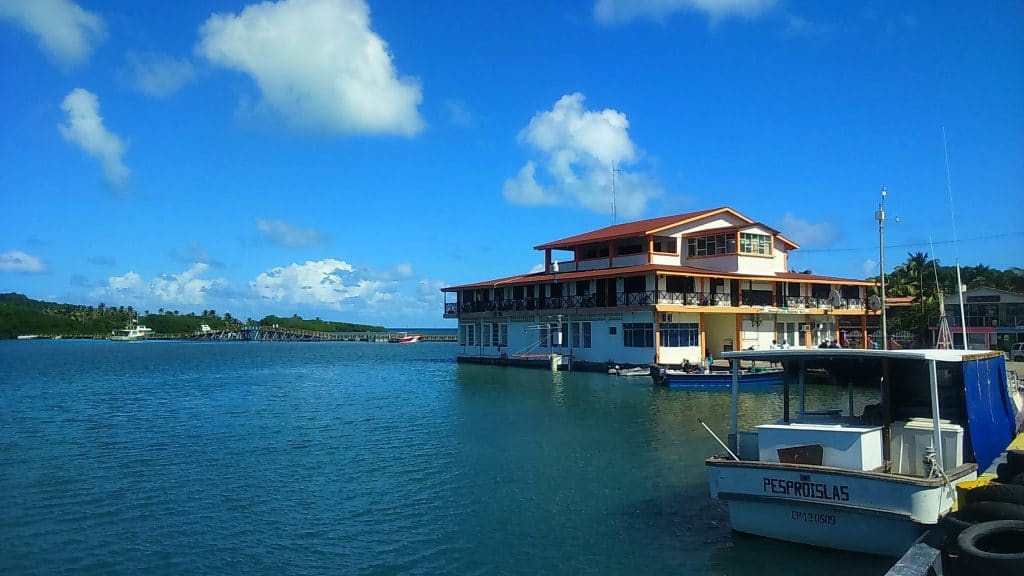
Santander, Bucaramanga
The region around the department of Santander is predestined for fresh air activities. The Chicamocha Canyon alone is worth a trip.
- Outdoor sports: A real cluster for outdoor sports enthusiasts has developed in the region around San Gil. From paragliding, bungee jumping to river rafting, nothing is left to be desired.
- Cultural and natural destinations: With La Mesa de los Santos, Barichara, Socorro, and San Juan de Giron, the department also offers great cultural destinations with magnificent nature in the surrounding area.
If we got your attention, we wrote a Santander travel guide to complement your outdoor trip.
Sucre, Sincelejo
- Top beaches: The department of Sucre is best known for its beaches and Colombians from Antioquia like to visit this region for beach holidays.
- Tolú: A municipality located on the shore of the Caribbean Sea. Ideal for when you want to chill, and drink cocktails.
- Cienaga de la Leche: An aquatic sanctuary where you travel along a freshwater river to the Caribbean Sea, rounded by swamp and full biodiversity.
- Island of San Bernardo: An island with golden beaches and crystal-clear water, where you can observe a great marine biodiversity if you go diving or snorkeling.
Tolima, Ibagué
Not only Caldas, Risaralda and Quindío make up the coffee triangle in Colombia. Also the northwestern area of Tolima is part of the coffee zone. The rest is on the Cordilleras and the Magdalena River crosses the territory from south to north.
- Combeima Canyon: An impressive canyon where you’ll find species such as foxes, condors, spectacled bears, and more than 300 species of birds.
- Nevado del Tolima: This area, beneath the Nevado del Tolima, is not only very accessible but also offers beautiful nature.
- Nevado del Tolima hiking: Reaching its summit is possible, especially if you practice high performance sports, due to its high altitude between 1,400 – 5,220 masl, it is considered “very demanding”. It is a favorite place for expert hikers.
Valle del Cauca, Cali
- A dream destination: If you love nature, you will get your money’s worth here, just imagine, Valle del Cauca, next to the Coffee Triangle and with access to the Pacific, is your place.
- From Buenaventura to Cali: Start in Buenaventura, on the Pacific coast, and choose your adventure: sail to different destinations or take the old routes to Cali.
- Flora, fauna, and birds: The diversity here is impressive, ideal for bird watching. However, it’s best to go with a tour operator who knows the terrain.
- Green Cali outskirts: Besides, the surroundings of Cali boast several nature hotspots you can’t miss.
- Siete Charcos: A river reserve where there are 7 deep spots with crystal clear water, where you can dive and bathe and even dive from some heights.
Vaupés, Mitú
- Pure Amazon: The Vaupés department is a 100% Amazon department and can only be reached by plane. Waterways are mainly used for transport within the department.
- Nature life-style? Outside the capital Mitú, which has around 30,000 inhabitants, all activities are nature-related.
There are already some good initiatives for municipal tourism:
- Apaporis Tunnel: Imagine a long flow with natural tunnels formed with big black rocks you can cross on boat. Definitely one of the best spots where you can see migratory swallows.
- Caño Sangre: A resort with red-colored waters due to the algae that grow in the river, in fact, it’s the most touristic and photographed destination in the entire region.
- Isla Espejo: Accessible only by boat, and if you’re into sports, it’s ideal for canoeing and diving. You’ll also get to meet indigenous communities.
Vichada, Puerto Carreño
Vichada is dubbed the corner of the Plains as it also borders Venezuela:
- Few people, many gems: Although it’s not a mass tourist destination, Vichada is a natural sanctuary of forests and rivers.
- El Tuparro National Natural Park: Picture an extensive green savanna with rivers, post-worthy golden beaches, native fauna, and flora. It’s a must-visit.
- Adventures: From fishing, horseback riding to embarking on a safari through the Plains, where you’ll see some of South America’s largest mammals like the tapir and many others.
More Nature Tourism Experiences in Colombia
Here is a list of incredible destinations for hiking and other nature activities in Colombia:
- The Best Hiking Routes in Colombia.
- The Most Representative Flowers in Colombia.
- Cacao Guide in Colombia.
- 33 Colombian Nature Travel Destinations
- 16 Hot Springs in Colombia You Should Know
- 7 Great National Parks in Colombia to Visit
- 7 Undiscovered Destinations in Colombia
- 21 Incredible Colombian Waterfalls
- 19 Caves to Discover in Colombia
- 7 Deserts in Colombia – Everything you should know
- Astrotourism in Colombia: Explore 4 Unmissable Stargazing Destinations
- Top 5 Best Lakes and Rivers for Fishing in Colombia that You Didn’t Know About
- Top 7 Places to Go Horseback Riding in Colombia
- Top 9 Best Places to See Animals in Colombia

